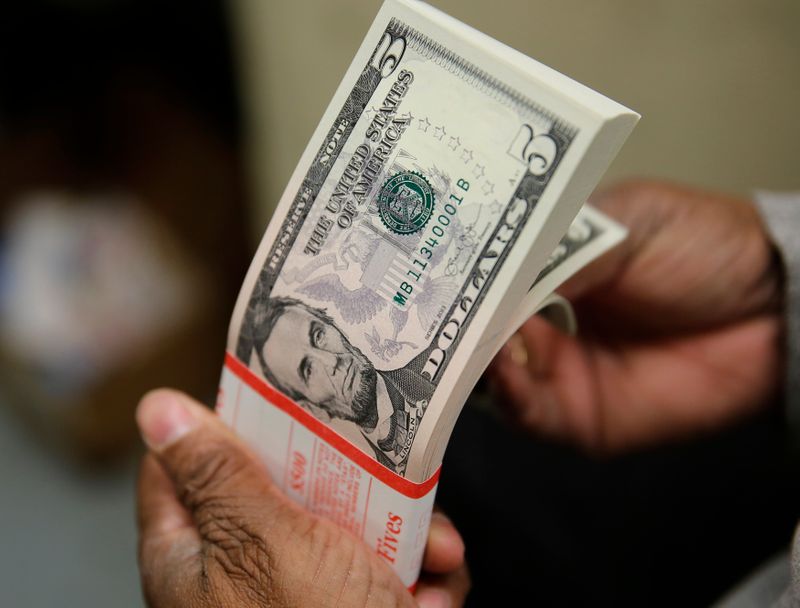NEW YORK (Reuters) – The dollar fell to two-week lows against a basket of currencies on Tuesday as risk sentiment returned to the market following better-than-expected economic data from China, which painted a less gloomy picture than feared following the coronavirus outbreak there.
China’s March exports fell 6.6% from a year earlier, compared with a forecast for a 14% drop, while imports fell by less than 1%, compared with a 9.5% drop predicted by economists.
“The dollar has retained a moderate softening bias amid a context of risk-on positioning and with global markets returning to full participation following the long weekends in many financial centres in Europe and Asia-Pacific. Chinese trade data for March provided bullish fodder for stock markets in Asia by showing an abatement in the rate of decline in imports and exports after the severe plunges in January and February,” wrote analysts at Action Economics.
Daily fatalities in the United States also fell sharply, and states began making plans to reopen their economies, leaving traders to abandon the safety net of the highly liquid dollar and turn to riskier currencies.
The dollar index, which measures the U.S. currency against a basket of six rivals <=USD>, fell 0.50% to 98.90.
The euro <EUR=> gained 0.62% against the greenback to $1.0981.
The Australian dollar <AUD=>, which is sensitive to Chinese demand because of the country’s dependence on raw materials exports, rose to a more than one-month high and last traded at $0.6432, up 0.80% on the day.
The greenback slipped 0.52% against the Japanese yen <JPY=> to 107.2 yen.
“The ongoing improvement in global investor risk sentiment in the near term combined with the Fed’s aggressive policy response is beginning to weigh down more on the U.S. dollar,” said Lee Hardman, currency analyst at MUFG.
The mood in the foreign exchange markets was pre-empted by leveraged funds, whose net short U.S. dollar positioning in the latest week touched its largest level since May 2018, according to calculations by Reuters and U.S. Commodity Futures Trading Commission data released on Friday.
The value of the net short dollar position was $10.5 billion in the week ended April 7, from net shorts of $9.9 billion the previous week. Speculators have been short on the U.S. dollar for four consecutive weeks.
(Graphic: Speculators go even shorter on U.S. dollar – https://fingfx.thomsonreuters.com/gfx/mkt/nmovaonzvab/Speculators%20go%20even%20shorter%20on%20US%20dollar.png) ((Graphic: FX positions – https://fingfx.thomsonreuters.com/gfx/mkt/xklvylznpgd/FX%20positions.JPG)
Last week, the U.S. Federal Reserve rolled out a $2.3 trillion effort to bolster local governments and small and mid-sized businesses in its latest move to keep the U.S. economy intact as the country battles the coronavirus pandemic.
The Fed’s latest efforts have added to current dollar weakness, analysts say.
(Reporting by Kate Duguid in New York and Olga Cotaga in London: additional reporting by Karen Brettell; Editing by Nick Zieminski and Jonathan Oatis)

























